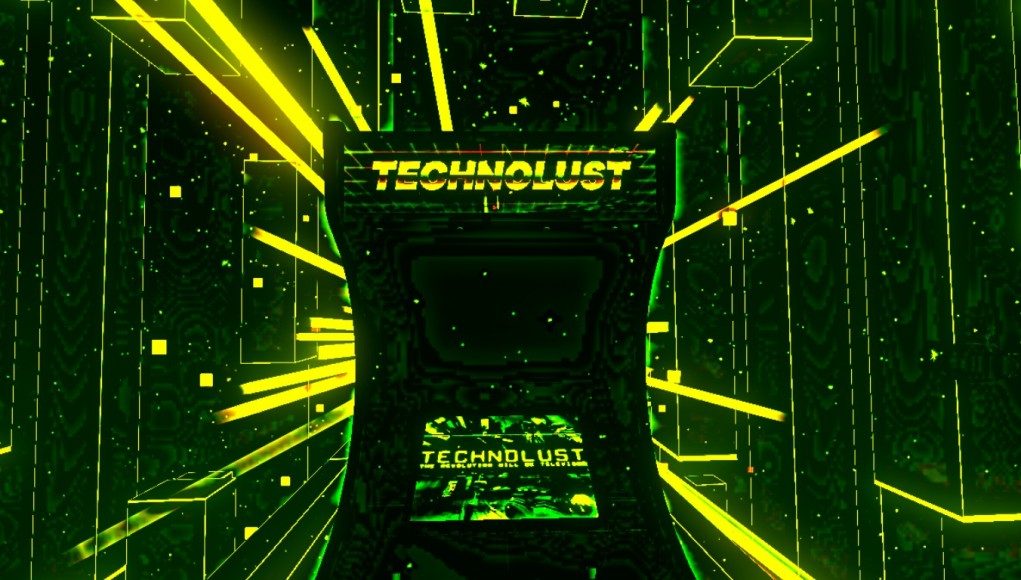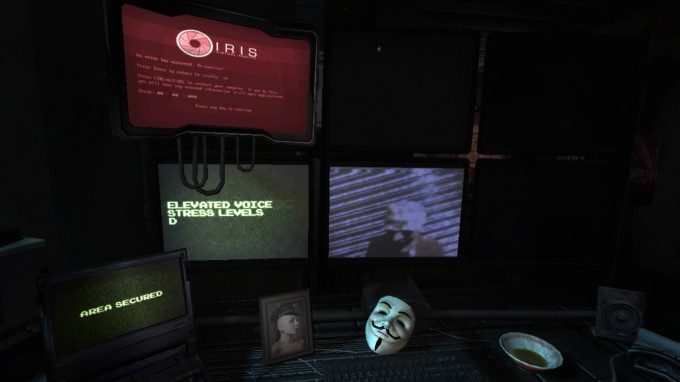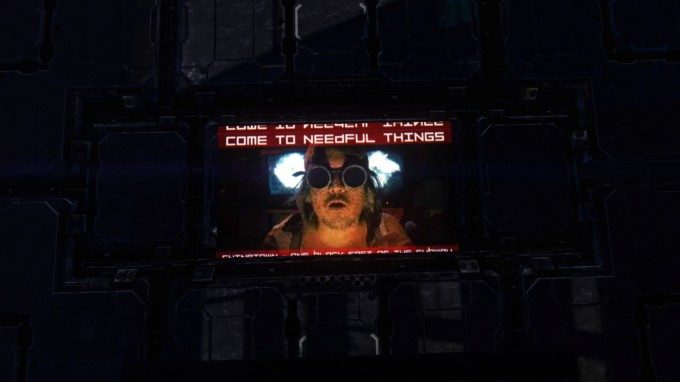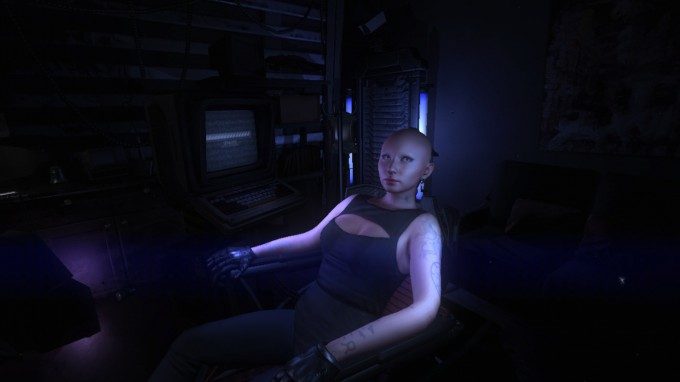Technolust, like many others in the cyberpunk genre, stands on the shoulders of giants. Taking cues from neo-noir staples like Blade Runner (1982) and William Gibson’s Neuromancer (1984), the adventure game makes good on its promise to deliver the lovably gritty ‘high-tech, low-life’ atmosphere that cyberpunk fans are after, but in a package that you can digest in a single sitting. The only problem: I need more. A lot more.
In Technolust you play a rebel hacker thrust into the fight against an evil corporation, one that just so happens to own the internet and all of the terminals to access it. Getting high-level access isn’t easy, but with the help of a device called a ‘red box’, you soon gain the ability to skirt around the corporation’s security protocols, and pretty much anything that stands in your way with the help of your companion AI.
Technolust dazzles with its indoor scenery, arguably the most immersive part of the whole game. Die-hard cyberpunks can easily spend a majority of their time ogling the dingy apartment dwellings, which are filled with a mix of pop culture references, decrepit late-20th century tech, and peppered with modern things like VR headsets and computer parts. Back at your apartment you can even sit on the couch and watch an old TV show as flying cars whiz by your high-rise apartment. Hanging in these spaces, you really get the sense that you’re stepping into the mind of someone who intimately understands the cyberpunk film and literary genre.
There is however a honeymoon period, one that I might have passed a while ago playing the game in its nascent form on both the DK1 and DK2 right after indie dev Blair Renaud’s successful Kickstarter campaign. For the purpose of this review (minimal spoilers ahead!) I’m going to try and delete that part of my brain that might initially gloss over the game’s raw novelty.
While spaces feel lived-in, they never quite feel alive—something you notice much more in VR than say through a desktop adventure game like Gone Home. Though no fault of its own, Technolust does its best to mitigate this with interesting scenery, real-life video of ancillary characters (that you consequently never meet), and NPCs created using 3D scanning that bring a greater sense of ‘humanness’ to the game.
It comes awfully close to simulating a real environment with real people thanks to a few clever techniques, some things that may strike you as counter intuitive on first blush. NPCs are always stationary. While not ideal, it at least doesn’t break our expectations of the near-photorealistic characters with scripted, clunky movements or ‘stupid AI’ behavior. You’ll also notice that all talking characters (besides those on video) always have some sort of mask to cover up any would-be facial movements. These aren’t at all off-putting for the duration of the game, which clocks in at around 2-hours of gameplay, but any longer and it could become gimmicky. Both piped-in video, like a running news report splayed out on screens throughout the game, and NPC voice acting are spot on, and deserve high marks for content and execution.
See Also: Review: ‘Chronos’ is a Massively Beautiful Game That Wants You to Die, and Die You Shall
Outdoor spaces are much less involved, and feel encumbered by the occasional invisible wall or conveniently placed barriers to diminish the size of map, something I remember seeing (and hating) from the early days of 3D gaming. Again, these sort of things are much more bothersome in VR than on desktop, and slightly breaks my expectations of the sort of realism Technolust craves to deliver.
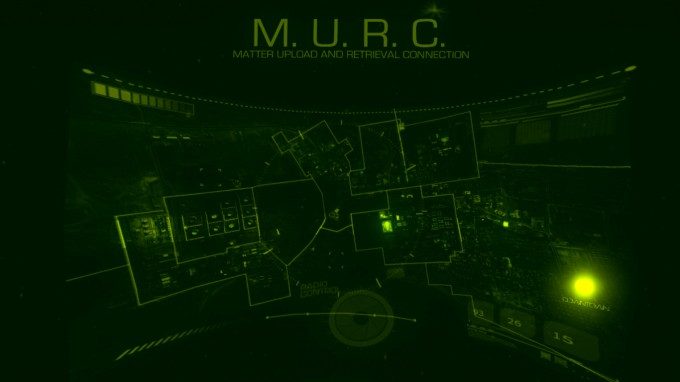
As a world-renowned hacker, you’re expected to infiltrate systems with your skills, and this is addressed in a refreshingly cool way—by ‘voxelified’ third-person hacking sequences, a mini-game where you supposedly ‘jack in’ to an arcade coin-op to gain access to the next portion of the narrative. Difficulty however is laughably easy, and feels more like an ongoing tutorial that never quite gets to shine on its own. The 3D-ified retro titles in the game’s arcade—something akin to the gamers’ den from the cult classic Hackers (1995)—are the only real challenge I found in the game, and is only used once to forward the narrative. That didn’t stop me from playing and attempting to beat every single one. ‘Attempting’ being the key word here.
Technolust does so much right, especially for a title that generally shows a high level of polish, but after beating the game I was left with the sense that I hadn’t really accomplished much. The ending felt too abrupt, and I never really got a chance to feel a connection to the mission or the people in the world. I should be running for my life from the police for my involvement in a rebel hacking crew, but I don’t for a single second feel in danger of being caught, or an ounce of sorrow for the death of someone close to me. Because the narrative promised risk, but never delivers, I feel somewhat robbed of an emotional experience I know it could easily have with more dialogue and a higher difficulty setting, or some way that sweeps you gently parallel to the game’s linear path, like avoiding a police drone or having to hack your way out of jail. Outside of a single time where I almost ran out of air in a space suit, most of my sense of accomplishment comes from collecting in-game items during my quest to fulfill an open promise of ‘good things to come’ from a pawn shop monger in Chinatown. I scoured the world for cassette tapes and activated electronic surveillance birds—both of which force you to listen intently for blaring ghetto blasters and cackling robot-crows. The payback isn’t great, but I can’t say I didn’t enjoy searching the trash for robot legs and arcade tokens.
See Also: Oculus Projects Two Month Delay for Some Early Rift Pre-orders
A VR game review isn’t complete without mentioning comfort, and as far as first-person games go, Technolust is generally a comfortable experience. Closely following the hard-won precepts in the Oculus Best Practice Guide, the game gives you a default snap-turn comfort mode (with yaw stick panning planned for a future update). There aren’t too many stairs, there’s no jumping, and it features good walking and running speeds, making Technolust as comfortable as a first-person seated gaming experience can be.
In the end, I was both surprised by the cohesive world of Technolust and genuinely enjoyed the narrative, but I desperately need more of everything. As a casual fan of cyberpunk, I need more side stories, increased consequences, more interaction, longer gameplay; and all of these things are on my list for a potential Technolust 2. There’s plenty of forgiveness on all accounts though, as Renaud (aka Anticleric) is a singular developer handling a world that could potentially be monstrously big.
Now if you’ll excuse me, I’m going to hunt down that last token to get another word of wisdom from Anticleric himself.


